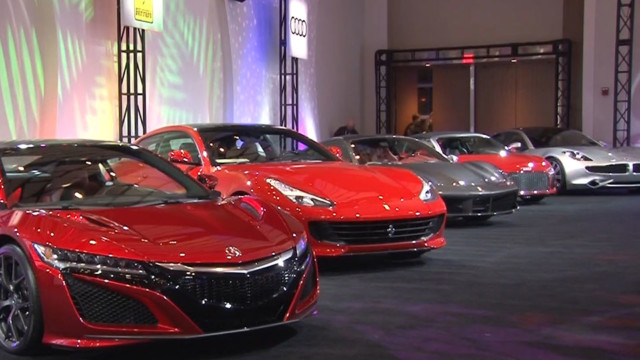The 2018 North American International Auto Show opened with a succession of new vehicle model reveals. No expense has been spared as the auto industry targets a new-year buzz.
But the warning signs remain. CGTN’s Dan Williams has this report.
After seven years of growth, 2017 saw a near-two percent slide in U.S auto sales. Those inside the industry remain upbeat.
“People will say that 2017 was down, but it was down off an all-time record and it was down about two percent,” said Alan Batey, General Motors Executive Vice President. “So at some point it is going to plateau. We expect the year ahead to be very strong.”
That message was emphasized by U.S. Transportation Secretary Elaine Chao in a keynote address. She hopes the impact of just-enacted US tax cuts, which reduced the US corporate tax rate from 35 to 21 percent, will help the industry. Some analysts predict those reforms will also boost sales in the luxury car market.
There are potential roadblocks ahead for the auto industry. A possible tightening of access to credit, as well as the risk of higher Federal Reserve interest rates could drag down new car sales. And then there are the ongoing negotiations over a revamp in the North American Free Trade Agreement.
U.S. President Donald Trump has threatened to abandon the agreement and is calling for a greater percentage of car parts to be sourced in the U.S. and not from Mexico or Canada.
Joe Hinrichs, Ford President of Global Operations, is hoping these disputes can be settled.
“We do support the modernization of NAFTA. We have had conversations with the administration,” says Hinrichs. “We believe in free and fair trade. We believe that North America needs to be competitive globally and NAFTA is a big part of that. We are a part of those conversations, hopefully we see a resolution that will work for all three countries.”
Ray Tanguay, an automotive advisor to the Canadian Government, warns that if the U.S. untangles itself from NAFTA, both the industry and the consumer would suffer.
“Anybody who is going to try and interrupt that trade flow and put some barriers into that is just trying to hurt the industry period,” Tanguay said. “To put a tariff on it is increasing the cost. If you increase the cost, you increase the cost of the car, if you increase the cost of the car you going to reduce the demand.”
These are the cars that will fill showrooms across the globe. But whether the volume of sales moves in an upward curve, remains to be seen.
 CGTN America
CGTN America
